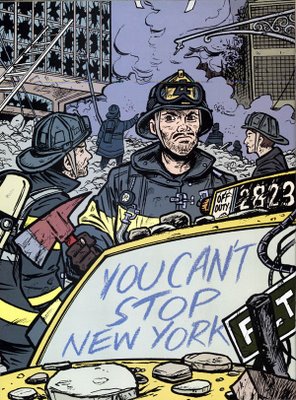 9-11 Artists Respond Volume 2 (224 pages, full color)
9-11 Artists Respond Volume 2 (224 pages, full color)The actual title of this second volume is "9-11 - The World's Finest Comic Book Writers and Artists Tell Stories to Remember." Similar to the first volume, this one contains several short stories and illustrations from both established and emerging (at the time) artists, with the varying degrees of quality that you would expect from this kind of anthology. Unlike the first book, this second volume is organized into six sections based on the nature of the content.

Each section opens with a title page with a single image, and this one by Glenn Fabry is the best by far. Fabry's painting of a battered security badge presumably found amidst the rubble and debris, opens the first section, entitled simply "Nightmares."
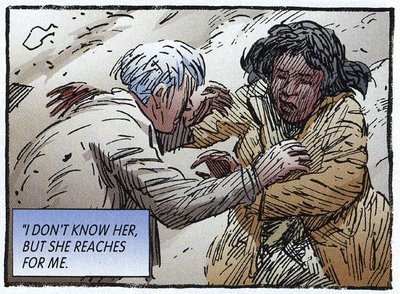
This single panel from Guy Davis and James Denning's excellent four-page story, "Walk" jumped off the page at me for some reason. The figures reaching for each other set against a cloud of dust as the buildings collapse just seemed to capture the fear and desperation better than most of the other contributors in this section.

This appropriately silent two-page story by Dan Abnett and Andy Lanning with art by
V For Vendetta's David Lloyd struck a chord. The portrayal of the walls plastered with missing persons sheets is not an exaggeration. I remember seeing these all over the city, literally on any flat surface, for months after 9/11.

The highlight from the second section, "Heroes" is Darwyn Cooke's single page contribution, "Human Values." Definitely worth reading (click on the image), this piece reflects on the priorities of a society that worships celebrities while taking its real heroes for granted.
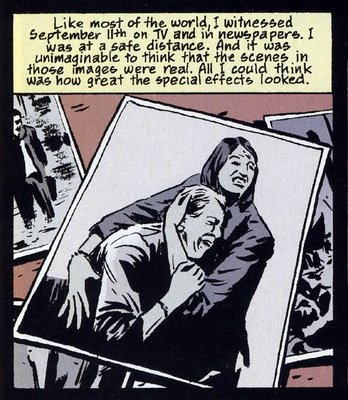
By far the standout from the third section, entitled "Recollections" is Ed Brubaker and Michael Lark's six-page story "Scene of the Crime: STILL LIFE." Using the same characters from the popular Vertigo mini-series of the same name from a few years ago, Brubaker tells the story of his uncle Knut, a crime scene photographer who happened to find himself at the World Trade Center on that fateful morning. Brubaker's story is an exploration on whether faith and religion caused the attacks, and also manages to make several other intelligent points while still delivering an actual story. If you've got these trades sitting on the shelves, this story is worth re-reading.

This contribution from Phil Jiminez is definitely taken from a photograph. I remember, for several days after 9/11, my wife and I would walk from Lincoln Center to the Upper West Side to see a friend, and we would pass two or three fire stations along the way. Each of them had shrines like this with bouquets, wreaths, pictures, candles, etc. It was really heartbreaking, and Jiminez's drawing captures that sense of loss well.

I'm not sure why, but I just love this image from Paul Pope.

A lot of writers and artists contributed superhero stories, all of which reflected on the nature of fictional heroes vs. those in real life, but this one by Alan Davis, Robin Riggs, Mike Collins and Mark Farmer seemed to do it best. The story, written by Dan Jurgens, is about a young boy named Alex who draws a comic in which the DC heroes all pitch in not only to save all the victims of the terrorist act just before the planes hit, but also to rebuild the Towers "ten times taller" than before. The technique I love is the way the artists work together to change the drawing styles from an adult's to a child's.
There are undoubtedly other highlights in this collection. Brian K. Vaughan's story about feeling like drawing cartoons is meaningless in the face of such a tragedy certainly struck an honest chord. Neil Gaiman and Chris Bachalo contribute a Death story which is pretty good, using a metaphor of a ferris wheel in an abandoned theme park for life. Peter Gross and Darick Robertson imagine New York City a thousand years in the future through a mother and her young daughter visiting the World Trade Center memorial, which bears a striking resemblance to the Vietnam Memorial in Washington D.C. Kurt Busiek and Brent Anderson also contribute a short Astro City tale.


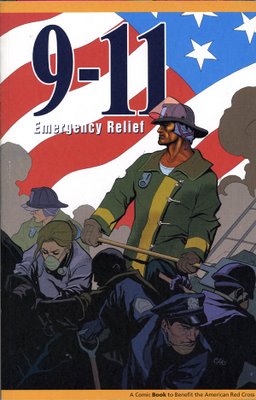
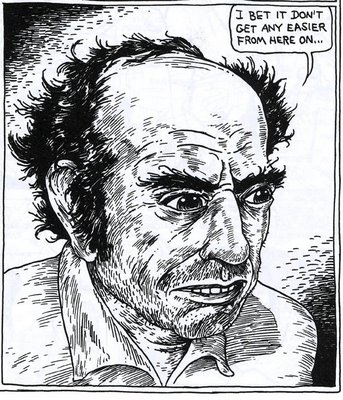
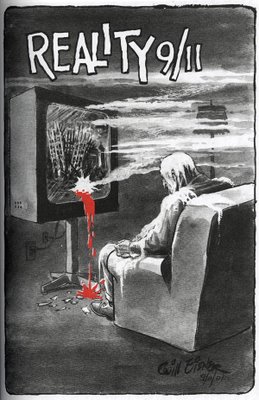













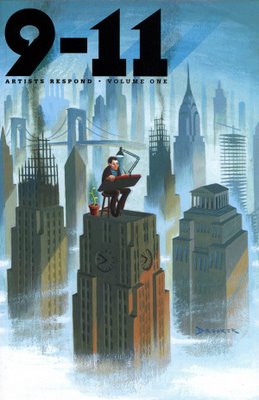


 Roger Langridge's
Roger Langridge's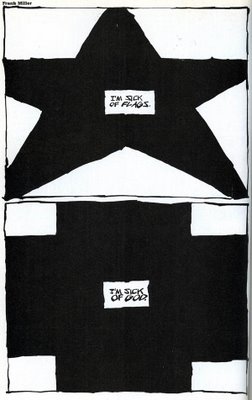
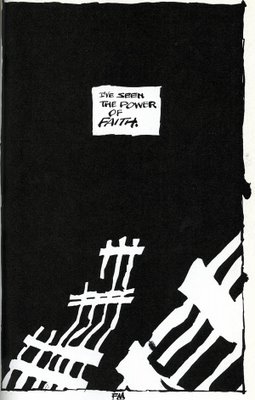



 Al Davison's
Al Davison's



